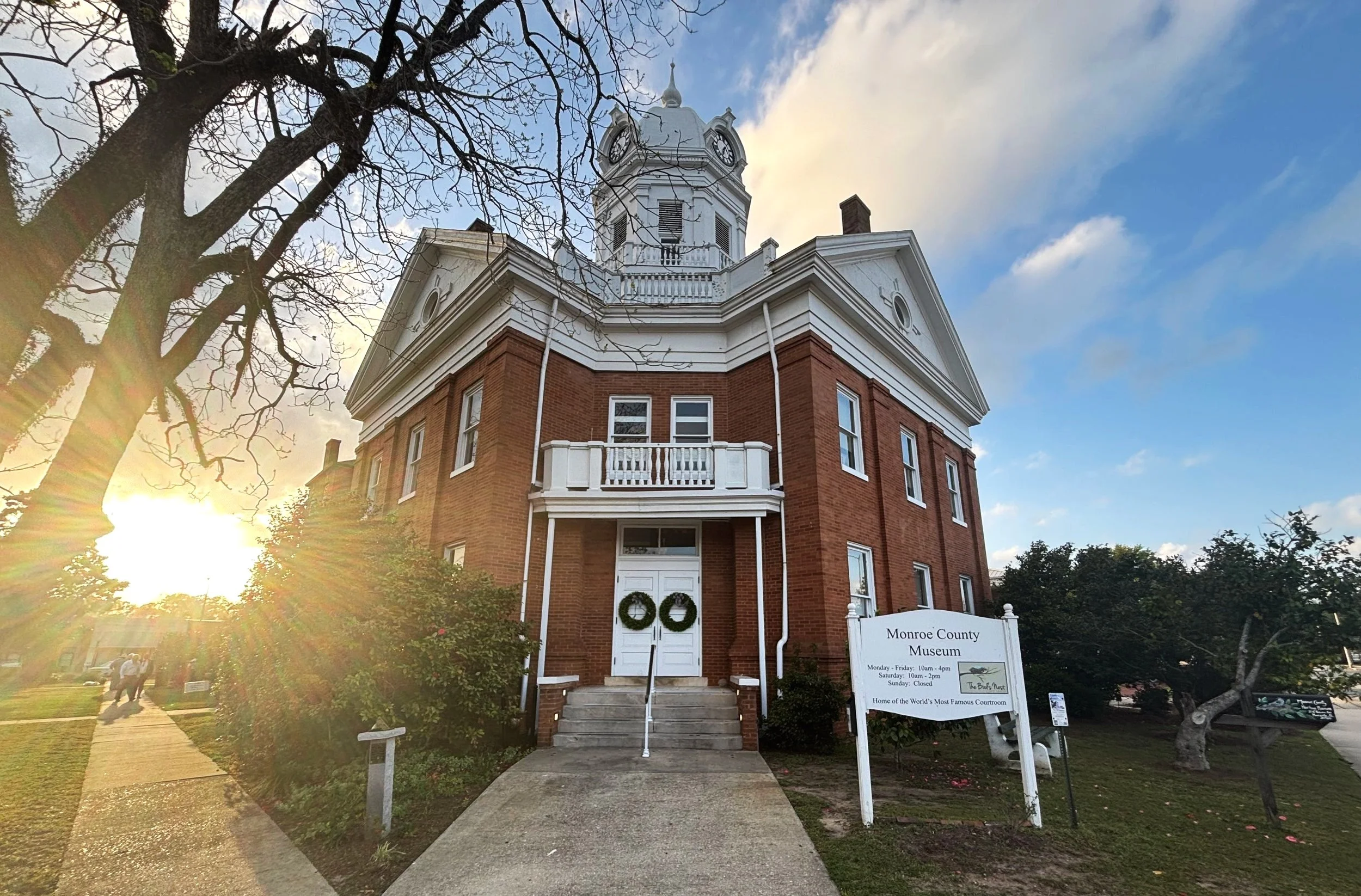Harper Lee's 'To Kill a Mockingbird' Comes to Life in the Late Author's Tiny Alabama Town
“Maycomb was an old town, but it was a tired old town when I first knew it. In rainy weather the streets turned to red slop … [s]omehow it was hotter then … bony mules hitched to Hoover carts flicked flies in the sweltering shade of the live oaks on the square. Men’s stiff collars wilted by nine in the morning. Ladies bathed before noon, after their three-o’clock naps, and by nightfall were like soft teacakes with frostings of sweat and sweet talcum … There was no hurry, for there was nowhere to go, nothing to buy and no money to buy it with, nothing to see outside the boundaries of Maycomb County. But it was a time of vague optimism for some of the people: Maycomb County had recently been told that it had nothing to fear but fear itself.”
These words, which appear in the first chapter of author Nelle Harper Lee’s timeless classic “To Kill a Mockingbird”, originally published July 11, 1960, describe the fictional town of Maycomb as seen through the eyes of the young narrator and protagonist of the story, Jean Louise “Scout” Finch. While Maycomb itself may not have been real, the town was modeled after Lee’s actual hometown of Monroeville, Alabama, the very real and very tiny county seat of rural Monroe County. Home to a population of about 6,000 people, Monroeville would likely be just another blip on the map if not for its association with a pair of the 20th century’s most well-known American writers, Harper Lee and Truman Capote. It was the town’s connection to those two wordsmiths, in fact, that brought me there on a spring day in April 2025.
As a writer myself, I am naturally drawn to other writers. How did she come up with this plotline? What was the inspiration for this character? What was it like for him growing up on that street, in that neighborhood, in that town? These are the kinds of questions that swirl around in my head when I discover an author whose work speaks to me, as Lee’s “To Kill a Mockingbird” did when I read it for the first time during my freshman year of high school.
For the uninitiated — and I am going to give you the non-Spark Notes, non-AI version here — the story of “Mockingbird” is centered around Jean Louise Finch, with the tale beginning when she is 6 years old and ending when she is 8 years old. During that uber-formative period, Jean Louise, who goes by the nickname “Scout”, experiences a series of events that transforms her worldview. She and her older brother Jem, along with their on-again, off-again neighbor Dill, who sometimes stays with his relatives that live next door to the Finches, observe their father, a lawyer by profession, attempt to defend a Black man in court after he is falsely accused of sexual assault by a white woman. Given that the story takes place in the wake of the Great Depression in the Deep South, it’s not difficult to guess how that plays out. Along the way, Scout learns a lot about the way the world works and how unfair life can be. She tries to grapple with these notions, taking us along for the ride in what ends up being a thought-provoking, heart-rending journey.
The book is one that stayed with me long after I read it. I have since re-read it a couple more times, and it still hits the same. Even though it was written decades ago and is set even further back in time, the wisdom and insight it attempts — and, in my opinion, succeeds — to imbue its readers with is truly timeless.
With that in mind, you can only imagine my excitement in planning a side excursion to Lee’s hometown of Monroeville, where, every spring, local actors come together to put on a production of “To Kill a Mockingbird” in and around the building that houses the Old Monroe County Courthouse, which was used as the model for the courtroom seen in the 1962 film based on the book. The play takes place in two parts, with Act I set outside the courthouse in a makeshift neighborhood featuring the Finches’ house, Mrs. DuBose’s house, and the Radley place. After an intermission, things then move inside for the tense legal drama that unfolds in Act II, for which members of the audience are chosen to sit on the jury.
The kids that played Scout, Jem, and Dill — a character, I should add, that is based on Truman Capote — did a tremendous job. It would be a tough ask for almost any child actor to embody these characters which take part in a story with such mature themes, but this trio delivered a believable, emotional, impassioned, and, when the script called for it, funny performance that really brought Lee’s classic tale to life. The actor who played Atticus Finch, pictured with me above, was also phenomenal. I had the chance to speak with him briefly after the show and he told me he had been part of the production, in which all of the actors volunteer their time and talents, for the last six years.
After getting the photo with “Atticus” and having my playbook signed by “Scout”, “Jem”, and “Dill” (because of course I did), I had a hankering to lay eyes on the pair of lots down the street from the courthouse where the childhood home of Nelle Harper Lee and the former home of the Faulk family, relatives of Capote, once stood. An ice cream shop now sits on the site where Lee’s home used to be, but next door to that are the last remaining bits of stone foundation that used to be part of the Faulk home, along with an historical marker explaining the property’s connection to Capote. To the casual passerby, it probably wouldn’t look like much, but to a nerd like me, it was tantamount to the long-awaited fulfillment of a travel bucket list goal.
Nelle Harper Lee may have passed away in 2016, but her legacy continues to invigorate the tiny town of Monroeville, where she both grew up and lived out the later years of her adult life. The volunteer-led April/May production of “To Kill a Mockingbird” is obviously the headliner, but her mark can be found elsewhere in the town and surrounding areas as well, from exhibits in the Old Courthouse Museum featuring her and Capote, to the Birdhouse Trail, along which you’ll find 25 custom-designed birdhouses, some of which depict scenes from “Mockingbird”. You can also take a page out of Lee’s book (see what I did there?) by visiting one of her favorite restaurants, David’s Catfish House, just south of town.
-LTH




